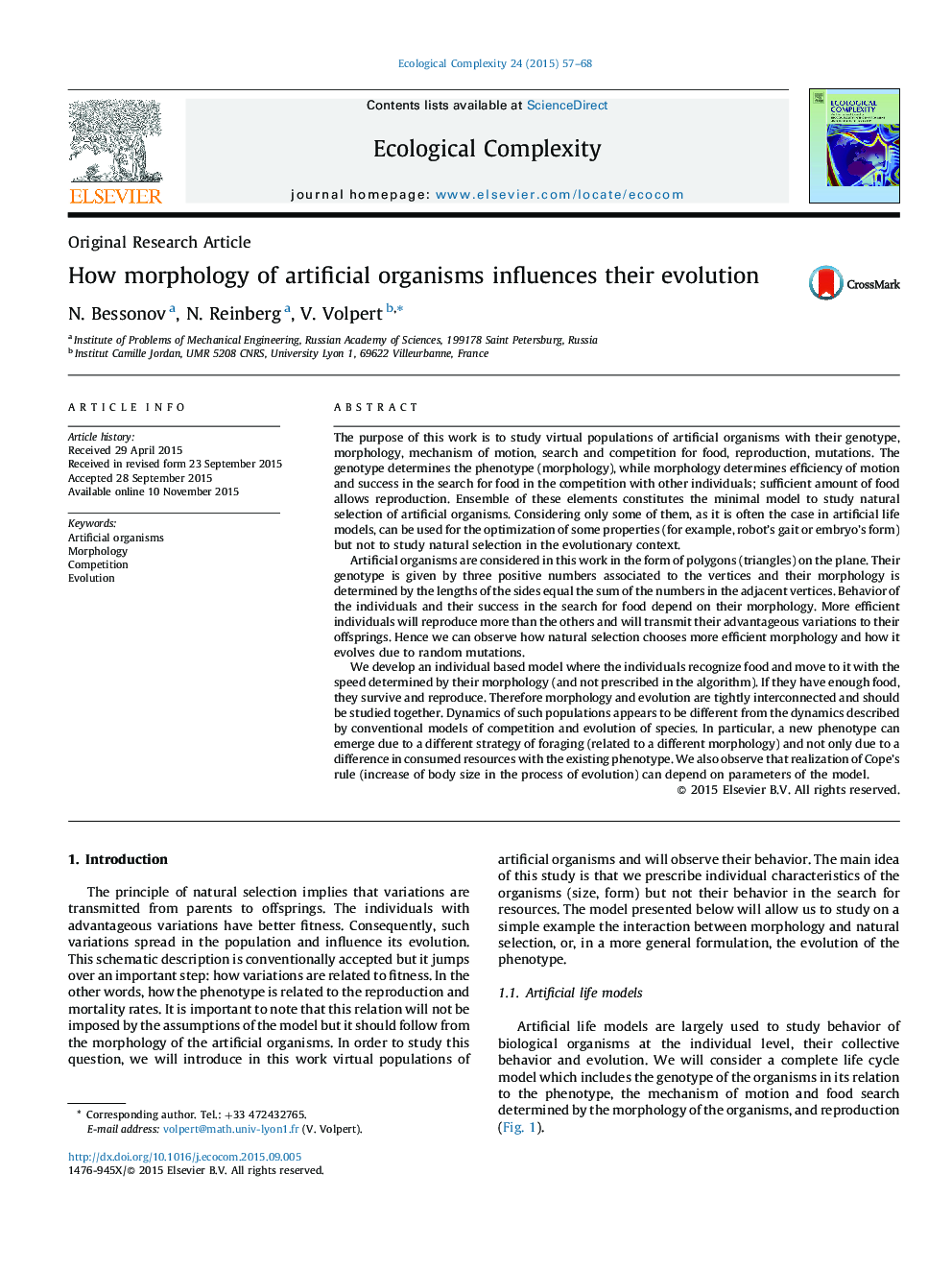| کد مقاله | کد نشریه | سال انتشار | مقاله انگلیسی | نسخه تمام متن |
|---|---|---|---|---|
| 4372428 | 1617090 | 2015 | 12 صفحه PDF | دانلود رایگان |
• We model the competition and evolution of artificial organisms.
• We show that their success in competition and their evolution depend on their morphology.
• The evolution chooses the most efficient morphology due to natural selection.
• New phenotypes can appear due to a different morphology and foraging behavior.
The purpose of this work is to study virtual populations of artificial organisms with their genotype, morphology, mechanism of motion, search and competition for food, reproduction, mutations. The genotype determines the phenotype (morphology), while morphology determines efficiency of motion and success in the search for food in the competition with other individuals; sufficient amount of food allows reproduction. Ensemble of these elements constitutes the minimal model to study natural selection of artificial organisms. Considering only some of them, as it is often the case in artificial life models, can be used for the optimization of some properties (for example, robot's gait or embryo's form) but not to study natural selection in the evolutionary context.Artificial organisms are considered in this work in the form of polygons (triangles) on the plane. Their genotype is given by three positive numbers associated to the vertices and their morphology is determined by the lengths of the sides equal the sum of the numbers in the adjacent vertices. Behavior of the individuals and their success in the search for food depend on their morphology. More efficient individuals will reproduce more than the others and will transmit their advantageous variations to their offsprings. Hence we can observe how natural selection chooses more efficient morphology and how it evolves due to random mutations.We develop an individual based model where the individuals recognize food and move to it with the speed determined by their morphology (and not prescribed in the algorithm). If they have enough food, they survive and reproduce. Therefore morphology and evolution are tightly interconnected and should be studied together. Dynamics of such populations appears to be different from the dynamics described by conventional models of competition and evolution of species. In particular, a new phenotype can emerge due to a different strategy of foraging (related to a different morphology) and not only due to a difference in consumed resources with the existing phenotype. We also observe that realization of Cope's rule (increase of body size in the process of evolution) can depend on parameters of the model.
Journal: Ecological Complexity - Volume 24, December 2015, Pages 57–68
